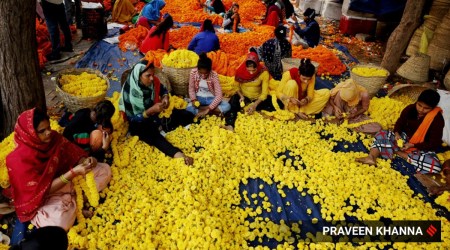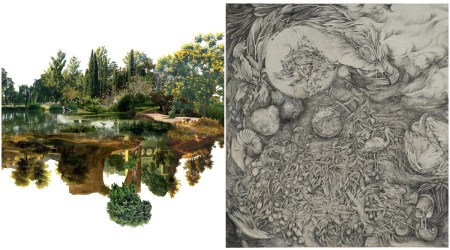 Before consuming besan, check if it is adulterated with other ingredients. (Source: Miansari66/wikimedia commons)
Before consuming besan, check if it is adulterated with other ingredients. (Source: Miansari66/wikimedia commons) Like many other kitchen ingredients, besan or gram flour can also be adulterated. In a 2019 note titled “Ensuring Safety of Pulses and Besan”, Food Safety and Standards Authority of India (FSSAI) mentions that besan can be adulterated with “flours of maize, yellow pea, rice, khesari dal, etc”.
Artificial colours and khesari dal adulteration in besan can lead to serious health risks, the document mentions.
Earlier, khesari dal was banned in 1961 after researchers pointed out that it could cause lathyrism, a condition which could lead to paralysis of the lower body and even cause numbness in the limbs and spine. The Indian Council for Medical Research (ICMR), however, lifted the ban in 2016.
So, it is best to conduct an adulteration test on besan before consumption. FSSAI shared a simple experiment on Twitter:
Detecting Besan adulteration with Khesari dal flour.#DetectingFoodAdulterants_12#AzadiKaAmritMahotsav@jagograhakjago @mygovindia @MIB_India @PIB_India @MoHFW_INDIA pic.twitter.com/JOvLhBDqfR
— FSSAI (@fssaiindia) October 27, 2021
*Take one gram of besan in a test tube.
*Add 3 ml of water to extract plant pigments into the solution.
*Add 2 ml of concentrated HCL.
*Shake the contents and let the mixture stand.
*If the besan is unadulterated, there will be no change in colour. Adulterated besan, on the other hand, will change its colour to pink. Metanil yellow, on reaction with HCL, gives pink colour.
📣 For more lifestyle news, follow us on Instagram | Twitter | Facebook and don’t miss out on the latest updates!
- The Indian Express website has been rated GREEN for its credibility and trustworthiness by Newsguard, a global service that rates news sources for their journalistic standards.
































